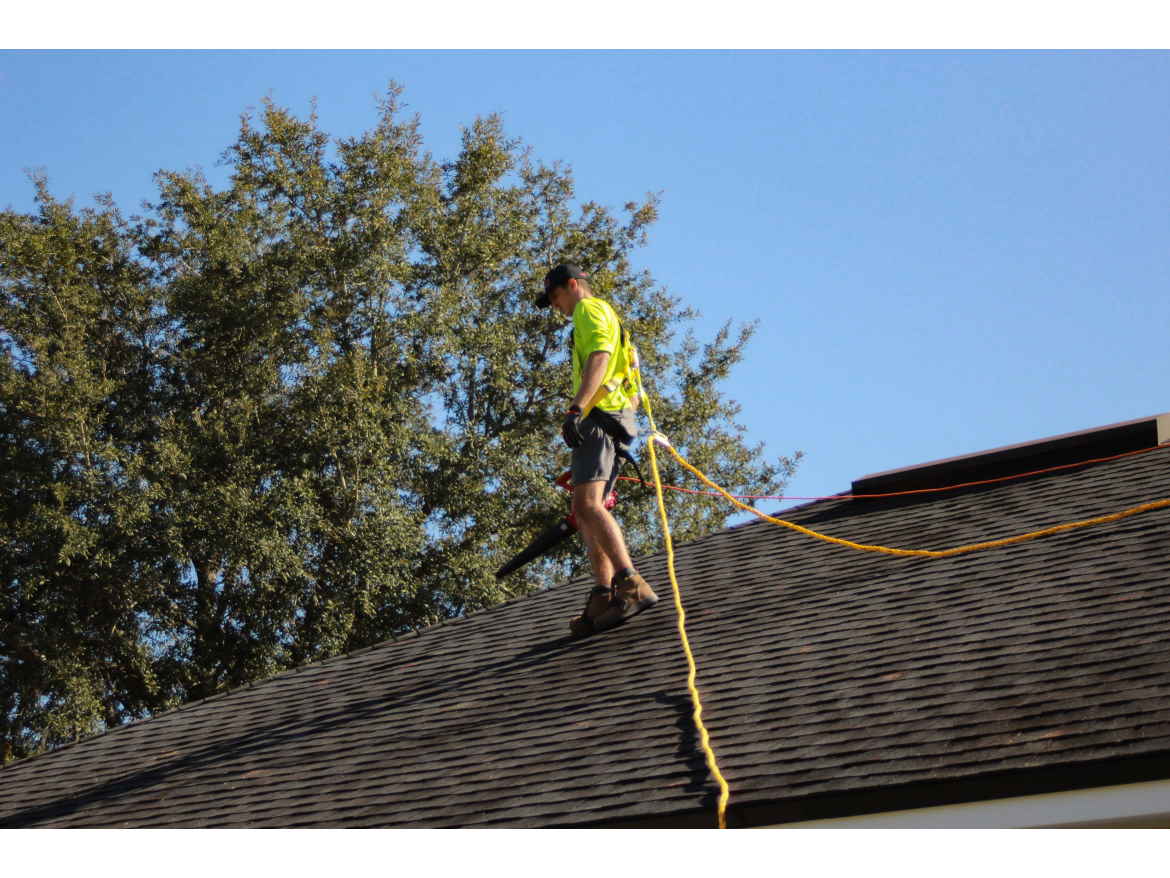
The amount of roofing contractors dying as a result of workplace injuries has modestly decreased, according to the latest data from the Bureau of Labor Statistics (BLS), but it is now one of the top three fatal occupations in the United States.
Data from the annual Census of Fatal Occupational Injuries shows that in 2020, 108 roofing contractors died as a result of a workplace injury. These deaths accounted for 2.2% of fatal workplace injuries in 2020. It’s a 2.7% decrease compared to last year’s data.
Falls continue to remain the main cause of death for roofing contractors. Of the 108 deaths, 80 of them were due to falls, slips and trips. The remaining 13 were due to exposure to harmful substances or environments. The total amount of deaths related to falls, slips and trips was 805, down from 880 in 2019. This means roofing accounted for 9.9% of all fatal falls in 2020. Sadly, one such incident in 2020 involved a 16-year-old roofer in Tennessee who fell approximately 160 feet to the ground.
"Exposure to fall hazards makes roofing work among the most dangerous jobs in construction. OSHA requires fall protection when working at heights greater than 6 feet," said OSHA Area Director Howard Eberts in Cleveland.
Even though there were fewer roofing deaths in 2020, roofing is still one of the deadliest occupations. The fatal work injury rate for roofers is 47 per 100,000 full-time equivalent (FTE) workers. By comparison, the average fatal work injury rate is 3.4 per 100,000 FTE workers. This means roofing’s fatality rate is 13 times higher than the average.
The only occupations more deadly than roofing in 2020 were fishing and hunting workers (132.1) and logging workers (91.7). “Helpers, construction trades” is after roofing with a rate of 43.3. The good news is that roofing’s fatal work injury rate is a 12.9% decrease from the previous year, which had a rate of 54.
The reason for the drop in roofing deaths is hard to pin down, but in examining other industries, the evidence points to the COVID-19 pandemic and its subsequent lockdowns as a cause. For instance, aircraft pilots and flight engineers had a fatal work injury rate of 61.8 in 2019, but in 2020, it dropped to 34.3. Travel bans and lockdowns no doubt played a role.
Roofing, like every other industry, took a hit in 2020, but after being deemed essential, got back to work. Construction deaths in general declined, with 1,008 happening in 2020, down from 1,061 in 2019.
Construction was the top industry sector for fatalities, followed by transportation and warehousing (805) and agriculture, forestry, fishing and hunting (511). This means of the overall 4,764 deaths that occurred in 2020, 21.1% of them were from construction.
The overall number of fatal workplace injuries in 2020 was recorded at 4,764, a 10.7% decrease from 2019. This is the lowest annual number since 2013.
Work-related fatal injuries continue to rise among Hispanic and Latino workers. Data shows the number grew to 22.5% from 20.4% in the previous year. Black or African American workers had a 14.7% decrease in occupational fatalities compared to 2019.
The Census of Fatal Occupational Injuries does not track fatal workplace injuries complicated by an illness such as COVID-19. The BLS website states information on COVID-19-related fatalities is “inconsistent and often unavailable” and “out of scope for CFOI unless precipitated by an acute injury.”
Recent Articles by Chris Gray



